For some, a 700cc farm quad might be considered excessive. However, there are a cohort of farms where the quad serves as a vital tool for lugging around loads such as fertiliser spreaders and trailers, as well as other trailed implements.
In many circumstances, the main difference in going from 500cc to 700c, aside from power increase, is the buying price. Often, dimensions remain the same or similar and fuel consumption mildly affected (depending on driving style).

The Yamaha Grizzly EPS 700 XT-R has a rated towing capacity of 600kg.
A larger displacement engine at low rpm will work at ease and will arguably burn similar or even less fuel compared to a smaller displacement engine revving higher at the same task.
Some time ago, we got the opportunity to test out the Yamaha’s all-singing, all-dancing Grizzly 700 EPS XT-R – Yamaha’s flagship ATV option aimed at both utility work and leisure applications.

At general light farm tasks, the Grizzly 700 proved just marginally harder on fuel than its 500cc competitors.
Other variants in the range include the special edition (SE) and more basic EPS model which features standard aluminium wheels and some other minor changes.
Grizzly v Kodiak
Up until recently, Yamaha offered both its Kodiak and Grizzly models in 450cc and 700cc forms. However, this has since changed, leaving the Grizzly no longer available in 450cc.
One of the initial questions I had was; leaving price aside, what are the main differences between the two when there is a crossover in power output?
In essence, the Grizzly is slightly larger in dimensions, heavier and features both front and rear hydraulic disc brakes whereas the Kodiak is fitted with an inboard oil immersed multi-disc setup.
On the other hand, the Kodiak is more utility orientated. The Grizzly features a more advanced suspension and adjustable shocks. Other slight tweaks have been made to the Grizzly’s transmission for increased torque and acceleration.
Driveline
The Grizzly 700 EPS XT-R gets its power from a 686cc single-cylinder, fuel-injected four-stroke engine. This liquid-cooled, fuel-injected setup is married to Yamaha’s Ultramatic belt-driven continuously variable transmission (CVT).
High, low, reverse, neutral and park modes are selected by navigating the gear shifter through the cranked gate.
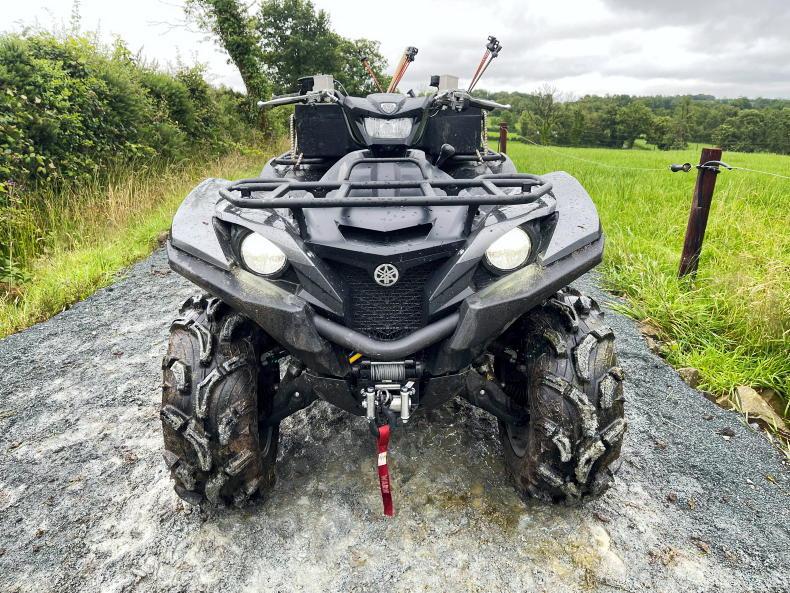
The upgraded Maxxis tyres proved great off-road but compromised road handling.

The selected transmission mode could be displayed larger given the size of the dash.
One praise of this setup was the positioning of the gear shifter, which was easily reached with the left hand while seated.
Park mode replaces the age-old handbrake which takes getting some used to coming from Honda and Suzuki models.
The only slight downside to this setup was when stopped on a hill, now and again it proved hard to disengage park without having to rock the quad forwards and backwards. Otherwise, shifting between drive modes is instant.
All in all, the transmission coupled with the lively Yamaha lump proved responsive.
One trait we liked about the Ultramatic transmission was that it required little engine rpm for light tasks such as herding cattle, etc – the engine was essentially only idling to achieve speeds up to 25km/h. This, I feel, is partly down to the transmission ratios and partly the shear engine power. Engine braking wasn’t as effective as previously witnessed on some competitor models, leaving greater reliance on the brake levers.

The gear lever is well positioned and features a park position to replace the handbrake.
Moving on to more strenuous tasks, the Grizzly 700 EPS XT-R really came into its own. One of the tasks it was challenged with was to pull a full 500kg Walco fertiliser spreader on hilly terrain.

The Grizzly is fitted with front and rear double wishbone suspension.
Having previously pulled the same spreader with a 493cc Suzuki KingQuad 500, the additional 193cc made a notable difference.
Considering 600kg is the maximum rated towing capacity of the Grizzly and that the full spreader took us close to the limit proves that there is no shortage of power to carry out any tasks the quad is rated for.

All Grizzly models come as standard with a 1,134kg winch.
Build, brakes and suspension
At first glance, we thought that the Grizzly didn’t appear to be built using as strong plastic panels as one or two of its competitors but having spent some time with it, our opinion changed.
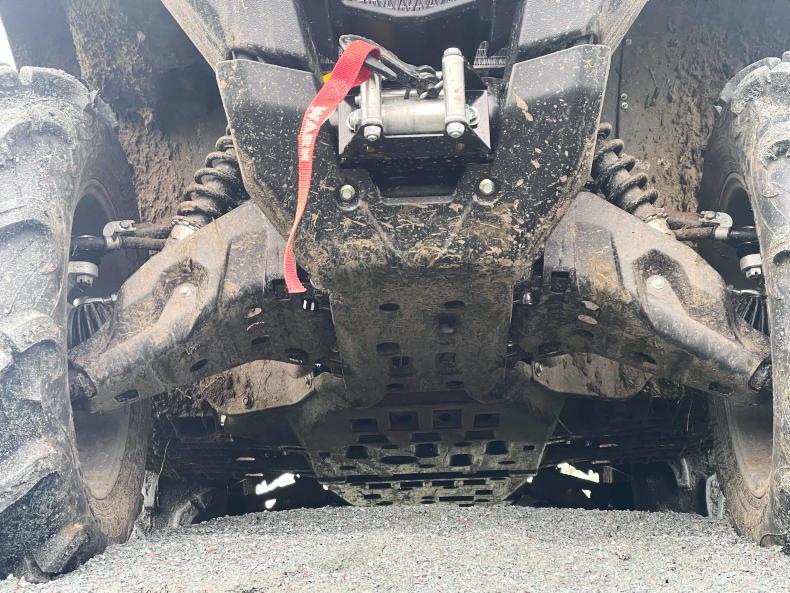
The Grizzly 700 XT-R has a 30cm ground clearance and well protected under carriage.
While some of the panels appear simple and light, they are in fact strong, durable and well secured.
More importantly, they are well supported, especially underneath the foot wells where it’s critical for a long maintenance-free working life. 
The ignition switch is located alongside a 12v power supply on the front right fender.
The foot wells are large and feature a flat bottom with grippy foot pegs.
Structurally, the quad’s running gear is housed within a well-built frame. A crash bar is integrated into the front of the quad providing a good level of strength and protection.
The suspension system too is what one would expect from a premium brand like Yamaha.
The front and rear benefit from an independent double wishbone setup – pretty much an industry standard with the exception of a few manufacturers offering a fixed swing arm-type rear axle option.

The Grizzly has a comfortable driving position and good control layout.
Up front, there is 193mm of suspension travel and 232mm on the rear, while all shocks have five-position pre-load adjustment.
Moving to brakes, both front and rear hubs are fitted with hydraulic disc brakes.
The righthand foot pedal works the rear brakes. Stopping power is good, as was expected.
Our demo unit, the sporty XT-R model, had large 14in alloy wheels, front- and rear-fitted, with 27x10 Maxxis tyres which give the quad an aggressive and wide stance. A great combination off-road but not the best all-rounder for the majority of farm tasks given the aggressiveness of the lugs.
Road handling at higher speeds seemed slightly compromised too due to the offroad bias of the tyres.
These large tyres help contribute to the high 300mm ground clearance.
Regardless of the large tyres, the electric power steering (EPS) left the steering feeling light and steering lock, up there with the best in class.
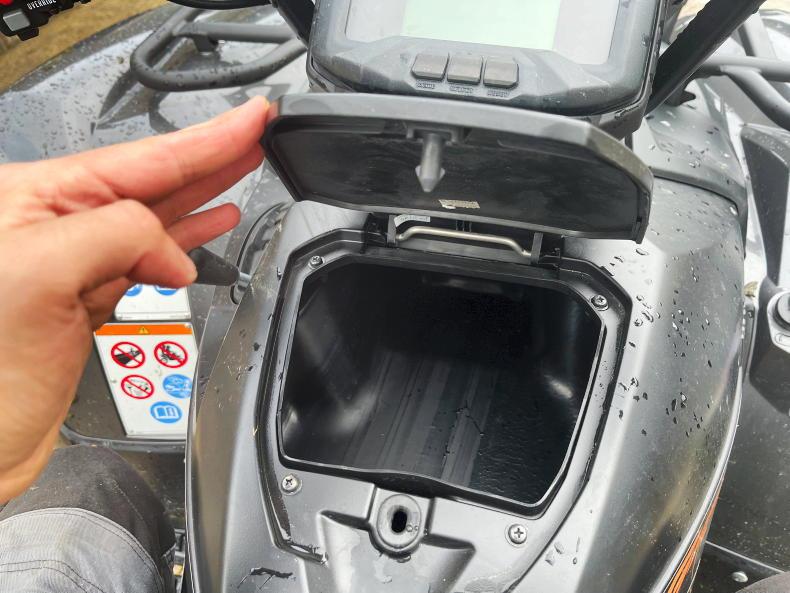
The Grizzly has three sizeable storage bins, one of which is water tight.
Controls and riding position
The handle bars are nicely positioned and the control layout appears pretty much standard. Lights, engine kill switch and the reverse override switch are positioned on the one cluster.
The horn and controls for the 1,134kg capacity Warn VRX 25 winch, which comes as standard, are positioned on the left hand side too, while 4wd/ diff-lock are on the right hand side.
Centred between the handle bars is a large digital-dash display.
Aside from the speedometer, fuel level, transmission positon 4wd status, riders can navigate between the odometer, dual trip meters, engine hours and service intervals, as well as engine temperature and battery voltage.
The status of 4wd/diff-lock is easily seen on screen but the gear position could be slightly larger given the screen size.
The ignition switch is positioned beside a 12v power supply on the right hand front fender.
Similar to the Suzuki KingQuad, we would rather see this positioned on the dash, although not a massive issue.
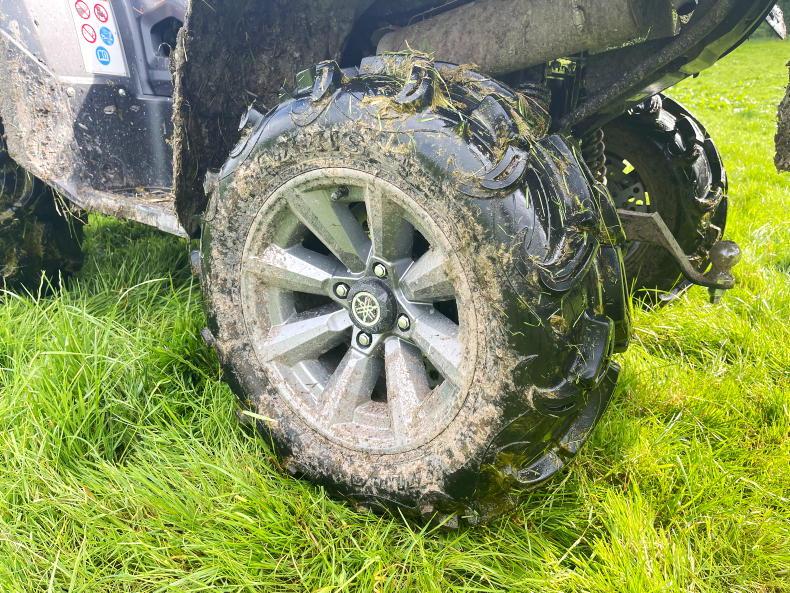
The XT-R model is fitted with 14in alloys and 27x10 Maxxis tyres.
There are three large storage compartments on board, one of which is positioned on the right and front fender and is fully waterproof, the next which is below the dash and the largest on the bike. It is water-resistant but tends to get a little warm inside given its location above the engine.
Finally, there is a third sizeable compartment underneath the rear taillight.
The front and rear racks offer industry-leading 50kg and 90kg carrying capacities, respectively.
As standard, the Grizzly XT-R comes fitted with LED headlights and an LED taillight. However, the handle bar work light is fitted with a halogen bulb which is a little disappointing for the flagship model.
Overall, the Yamaha Grizzly is impressive and more than capable, regardless of the task.
Whether or not 700cc is overkill for general farm use, (which it may well be) is a matter of personal opinion.
Having tried and tested numerous quads over the years at a range of general farm tasks, it wasn’t noticeably harder on fuel than any other quads in the 500cc to 600cc power bracket.
In fact, its fuel consumption pulling the 500kg Walco spreader was slightly below a machine in the 500cc power bracket recently tested.
Accessibility and riding position are good and the suspension appears to be well set up from a comfort and stability point of view.
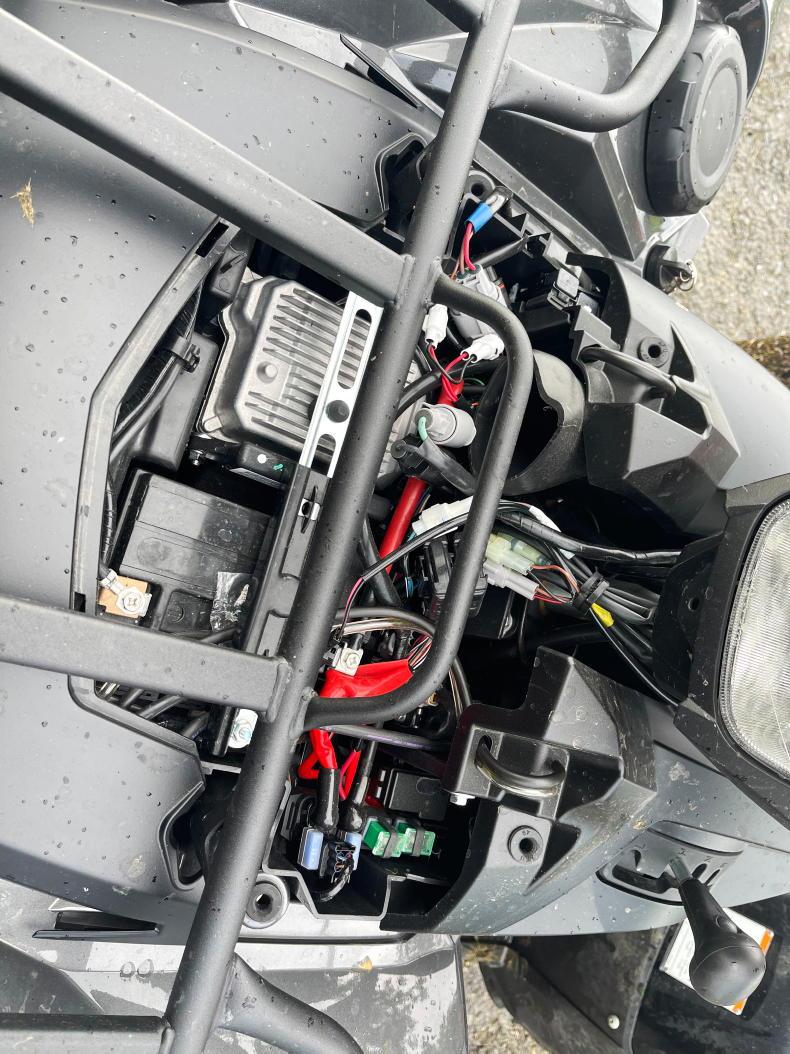
The battery and air breather are positioned in front of the handle bars.
The transmission is responsive and smooth. However, the lack of engine braking is the only minor gripe we could point out.
All necessary points are accessible from a maintenance point of view too.
The large tyres leave the rider more exposed to getting splashed with dirt, which the over fender kit offered as an extra would help eliminate.
To conclude, the Yamaha Grizzly 700 is a jack of all trades.
It’s a quad that performs equally as good on farm as it does off-road for recreational purposes.
Being the flagship model with all the bells and whistles, it does come at a hefty price which may put some customers off. However, the Grizzly 700 EPS does price slightly lower at €12,200 plus VAT.
Model: Yamaha Grizzly 700 EPS XT-R. Engine: 686cc single-cylinder, fuel injection. Transmission: dual-range Ultramatic CVT with selectable 4wd.Differential: front. Suspension: independent double wishbone, 193mm front travel and 232mm rear travel.Rack capacity: 50kg front and 80kg rear.Rated towing capacity: 600kg.Dry weight: 355kg.Ground clearance: 300mm. Price as tested: €13,000 plus VAT.Range starting price: €12,200 plus VAT.
For some, a 700cc farm quad might be considered excessive. However, there are a cohort of farms where the quad serves as a vital tool for lugging around loads such as fertiliser spreaders and trailers, as well as other trailed implements.
In many circumstances, the main difference in going from 500cc to 700c, aside from power increase, is the buying price. Often, dimensions remain the same or similar and fuel consumption mildly affected (depending on driving style).

The Yamaha Grizzly EPS 700 XT-R has a rated towing capacity of 600kg.
A larger displacement engine at low rpm will work at ease and will arguably burn similar or even less fuel compared to a smaller displacement engine revving higher at the same task.
Some time ago, we got the opportunity to test out the Yamaha’s all-singing, all-dancing Grizzly 700 EPS XT-R – Yamaha’s flagship ATV option aimed at both utility work and leisure applications.

At general light farm tasks, the Grizzly 700 proved just marginally harder on fuel than its 500cc competitors.
Other variants in the range include the special edition (SE) and more basic EPS model which features standard aluminium wheels and some other minor changes.
Grizzly v Kodiak
Up until recently, Yamaha offered both its Kodiak and Grizzly models in 450cc and 700cc forms. However, this has since changed, leaving the Grizzly no longer available in 450cc.
One of the initial questions I had was; leaving price aside, what are the main differences between the two when there is a crossover in power output?
In essence, the Grizzly is slightly larger in dimensions, heavier and features both front and rear hydraulic disc brakes whereas the Kodiak is fitted with an inboard oil immersed multi-disc setup.
On the other hand, the Kodiak is more utility orientated. The Grizzly features a more advanced suspension and adjustable shocks. Other slight tweaks have been made to the Grizzly’s transmission for increased torque and acceleration.
Driveline
The Grizzly 700 EPS XT-R gets its power from a 686cc single-cylinder, fuel-injected four-stroke engine. This liquid-cooled, fuel-injected setup is married to Yamaha’s Ultramatic belt-driven continuously variable transmission (CVT).
High, low, reverse, neutral and park modes are selected by navigating the gear shifter through the cranked gate.

The upgraded Maxxis tyres proved great off-road but compromised road handling.

The selected transmission mode could be displayed larger given the size of the dash.
One praise of this setup was the positioning of the gear shifter, which was easily reached with the left hand while seated.
Park mode replaces the age-old handbrake which takes getting some used to coming from Honda and Suzuki models.
The only slight downside to this setup was when stopped on a hill, now and again it proved hard to disengage park without having to rock the quad forwards and backwards. Otherwise, shifting between drive modes is instant.
All in all, the transmission coupled with the lively Yamaha lump proved responsive.
One trait we liked about the Ultramatic transmission was that it required little engine rpm for light tasks such as herding cattle, etc – the engine was essentially only idling to achieve speeds up to 25km/h. This, I feel, is partly down to the transmission ratios and partly the shear engine power. Engine braking wasn’t as effective as previously witnessed on some competitor models, leaving greater reliance on the brake levers.

The gear lever is well positioned and features a park position to replace the handbrake.
Moving on to more strenuous tasks, the Grizzly 700 EPS XT-R really came into its own. One of the tasks it was challenged with was to pull a full 500kg Walco fertiliser spreader on hilly terrain.

The Grizzly is fitted with front and rear double wishbone suspension.
Having previously pulled the same spreader with a 493cc Suzuki KingQuad 500, the additional 193cc made a notable difference.
Considering 600kg is the maximum rated towing capacity of the Grizzly and that the full spreader took us close to the limit proves that there is no shortage of power to carry out any tasks the quad is rated for.

All Grizzly models come as standard with a 1,134kg winch.
Build, brakes and suspension
At first glance, we thought that the Grizzly didn’t appear to be built using as strong plastic panels as one or two of its competitors but having spent some time with it, our opinion changed.

The Grizzly 700 XT-R has a 30cm ground clearance and well protected under carriage.
While some of the panels appear simple and light, they are in fact strong, durable and well secured.
More importantly, they are well supported, especially underneath the foot wells where it’s critical for a long maintenance-free working life. 
The ignition switch is located alongside a 12v power supply on the front right fender.
The foot wells are large and feature a flat bottom with grippy foot pegs.
Structurally, the quad’s running gear is housed within a well-built frame. A crash bar is integrated into the front of the quad providing a good level of strength and protection.
The suspension system too is what one would expect from a premium brand like Yamaha.
The front and rear benefit from an independent double wishbone setup – pretty much an industry standard with the exception of a few manufacturers offering a fixed swing arm-type rear axle option.

The Grizzly has a comfortable driving position and good control layout.
Up front, there is 193mm of suspension travel and 232mm on the rear, while all shocks have five-position pre-load adjustment.
Moving to brakes, both front and rear hubs are fitted with hydraulic disc brakes.
The righthand foot pedal works the rear brakes. Stopping power is good, as was expected.
Our demo unit, the sporty XT-R model, had large 14in alloy wheels, front- and rear-fitted, with 27x10 Maxxis tyres which give the quad an aggressive and wide stance. A great combination off-road but not the best all-rounder for the majority of farm tasks given the aggressiveness of the lugs.
Road handling at higher speeds seemed slightly compromised too due to the offroad bias of the tyres.
These large tyres help contribute to the high 300mm ground clearance.
Regardless of the large tyres, the electric power steering (EPS) left the steering feeling light and steering lock, up there with the best in class.

The Grizzly has three sizeable storage bins, one of which is water tight.
Controls and riding position
The handle bars are nicely positioned and the control layout appears pretty much standard. Lights, engine kill switch and the reverse override switch are positioned on the one cluster.
The horn and controls for the 1,134kg capacity Warn VRX 25 winch, which comes as standard, are positioned on the left hand side too, while 4wd/ diff-lock are on the right hand side.
Centred between the handle bars is a large digital-dash display.
Aside from the speedometer, fuel level, transmission positon 4wd status, riders can navigate between the odometer, dual trip meters, engine hours and service intervals, as well as engine temperature and battery voltage.
The status of 4wd/diff-lock is easily seen on screen but the gear position could be slightly larger given the screen size.
The ignition switch is positioned beside a 12v power supply on the right hand front fender.
Similar to the Suzuki KingQuad, we would rather see this positioned on the dash, although not a massive issue.

The XT-R model is fitted with 14in alloys and 27x10 Maxxis tyres.
There are three large storage compartments on board, one of which is positioned on the right and front fender and is fully waterproof, the next which is below the dash and the largest on the bike. It is water-resistant but tends to get a little warm inside given its location above the engine.
Finally, there is a third sizeable compartment underneath the rear taillight.
The front and rear racks offer industry-leading 50kg and 90kg carrying capacities, respectively.
As standard, the Grizzly XT-R comes fitted with LED headlights and an LED taillight. However, the handle bar work light is fitted with a halogen bulb which is a little disappointing for the flagship model.
Overall, the Yamaha Grizzly is impressive and more than capable, regardless of the task.
Whether or not 700cc is overkill for general farm use, (which it may well be) is a matter of personal opinion.
Having tried and tested numerous quads over the years at a range of general farm tasks, it wasn’t noticeably harder on fuel than any other quads in the 500cc to 600cc power bracket.
In fact, its fuel consumption pulling the 500kg Walco spreader was slightly below a machine in the 500cc power bracket recently tested.
Accessibility and riding position are good and the suspension appears to be well set up from a comfort and stability point of view.

The battery and air breather are positioned in front of the handle bars.
The transmission is responsive and smooth. However, the lack of engine braking is the only minor gripe we could point out.
All necessary points are accessible from a maintenance point of view too.
The large tyres leave the rider more exposed to getting splashed with dirt, which the over fender kit offered as an extra would help eliminate.
To conclude, the Yamaha Grizzly 700 is a jack of all trades.
It’s a quad that performs equally as good on farm as it does off-road for recreational purposes.
Being the flagship model with all the bells and whistles, it does come at a hefty price which may put some customers off. However, the Grizzly 700 EPS does price slightly lower at €12,200 plus VAT.
Model: Yamaha Grizzly 700 EPS XT-R. Engine: 686cc single-cylinder, fuel injection. Transmission: dual-range Ultramatic CVT with selectable 4wd.Differential: front. Suspension: independent double wishbone, 193mm front travel and 232mm rear travel.Rack capacity: 50kg front and 80kg rear.Rated towing capacity: 600kg.Dry weight: 355kg.Ground clearance: 300mm. Price as tested: €13,000 plus VAT.Range starting price: €12,200 plus VAT. 






















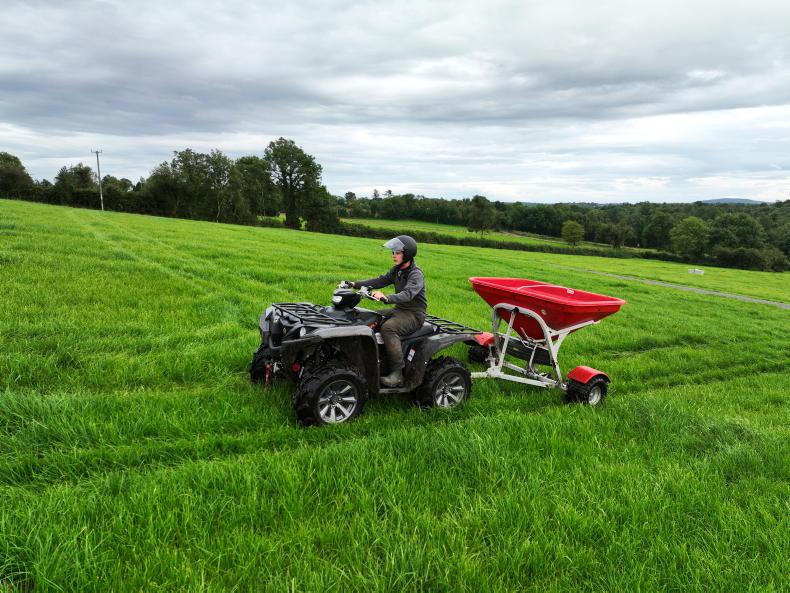
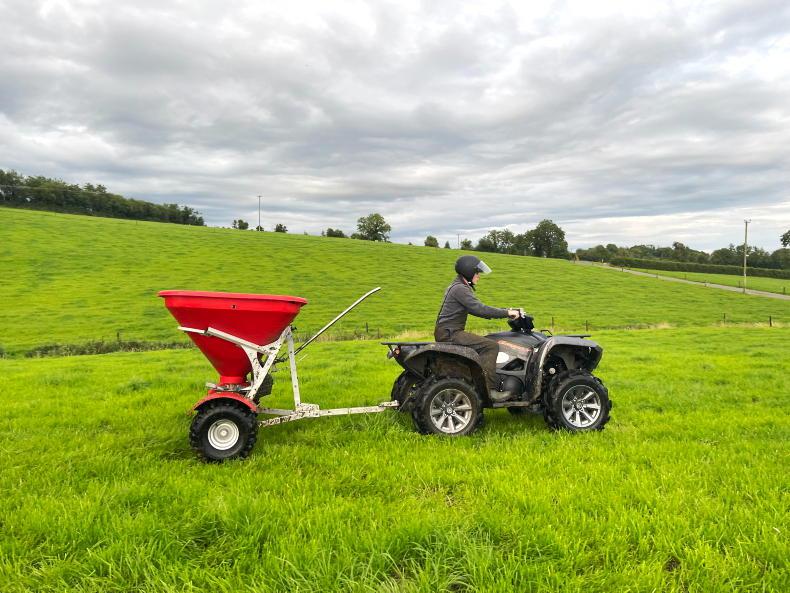
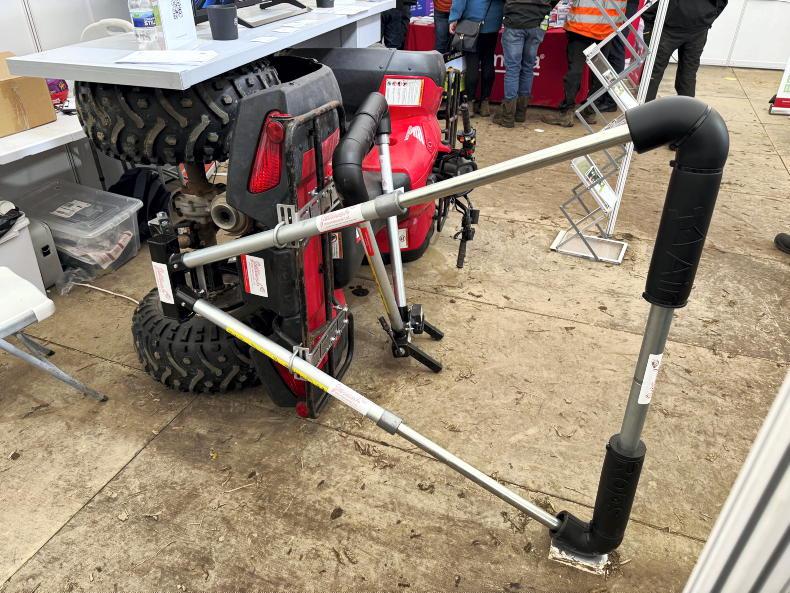
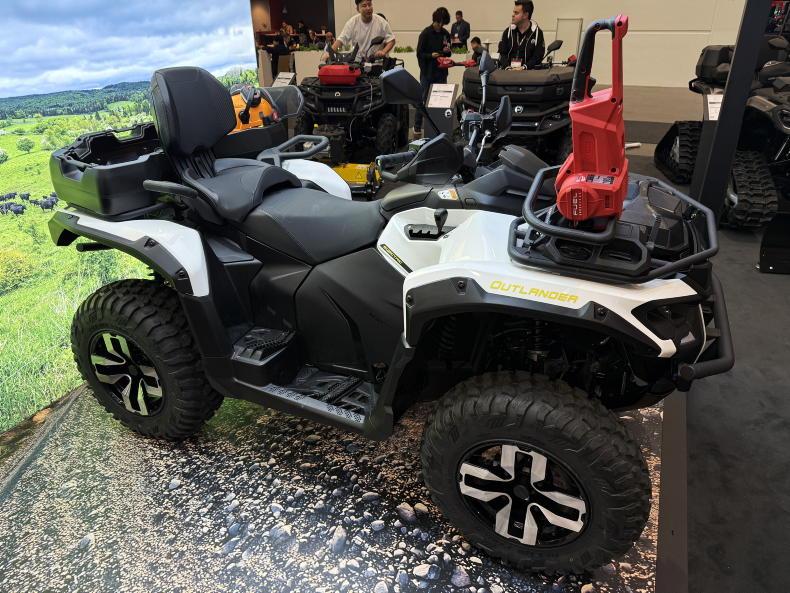
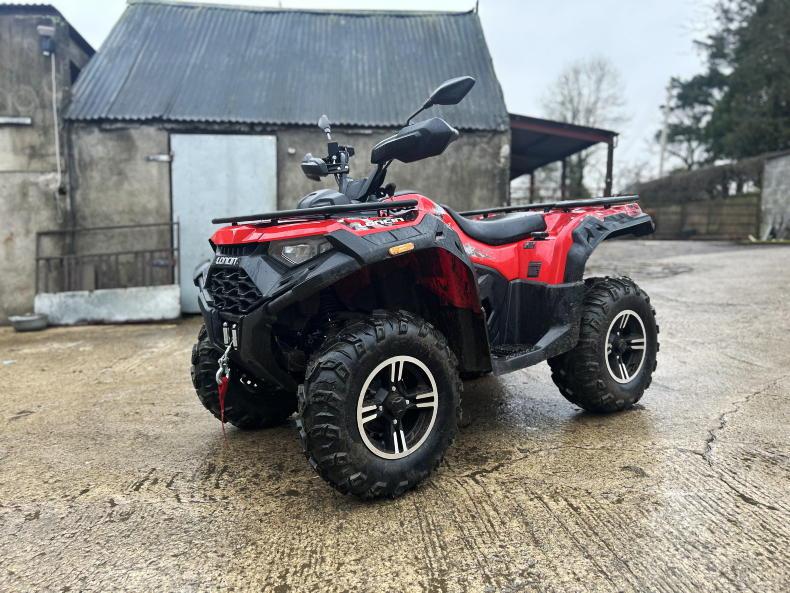
SHARING OPTIONS